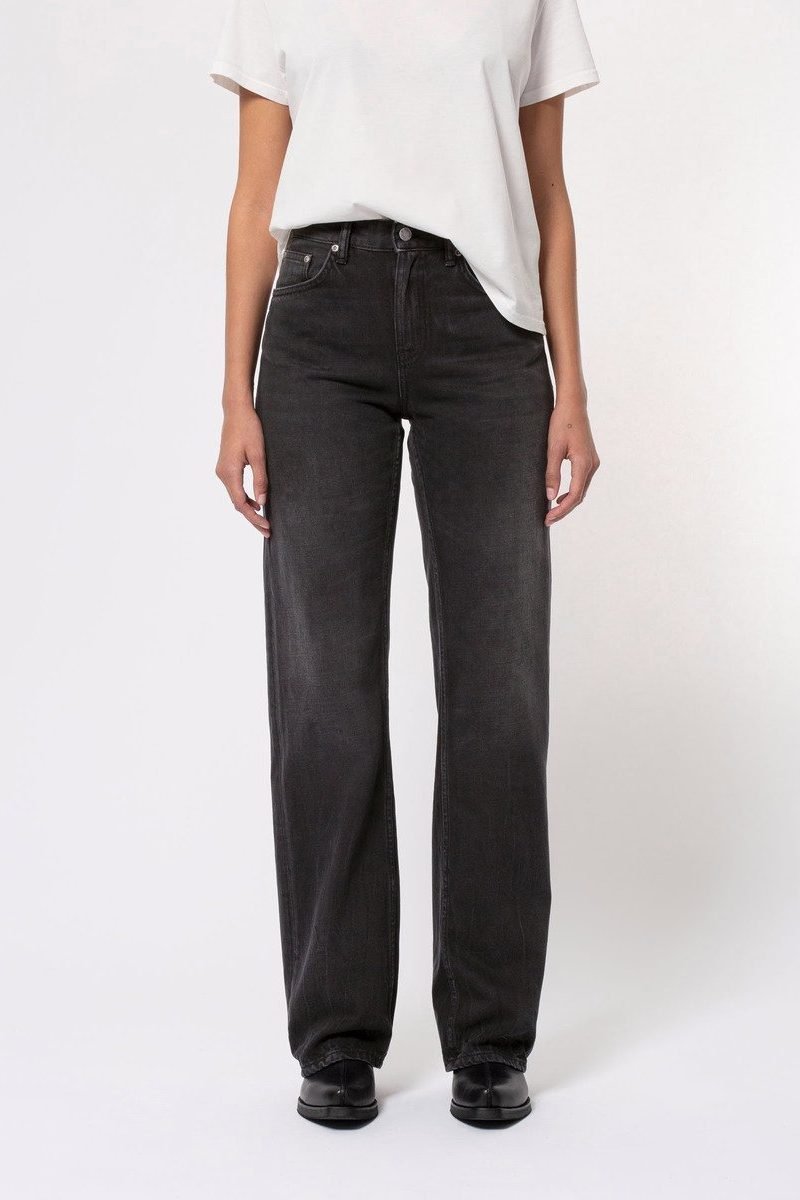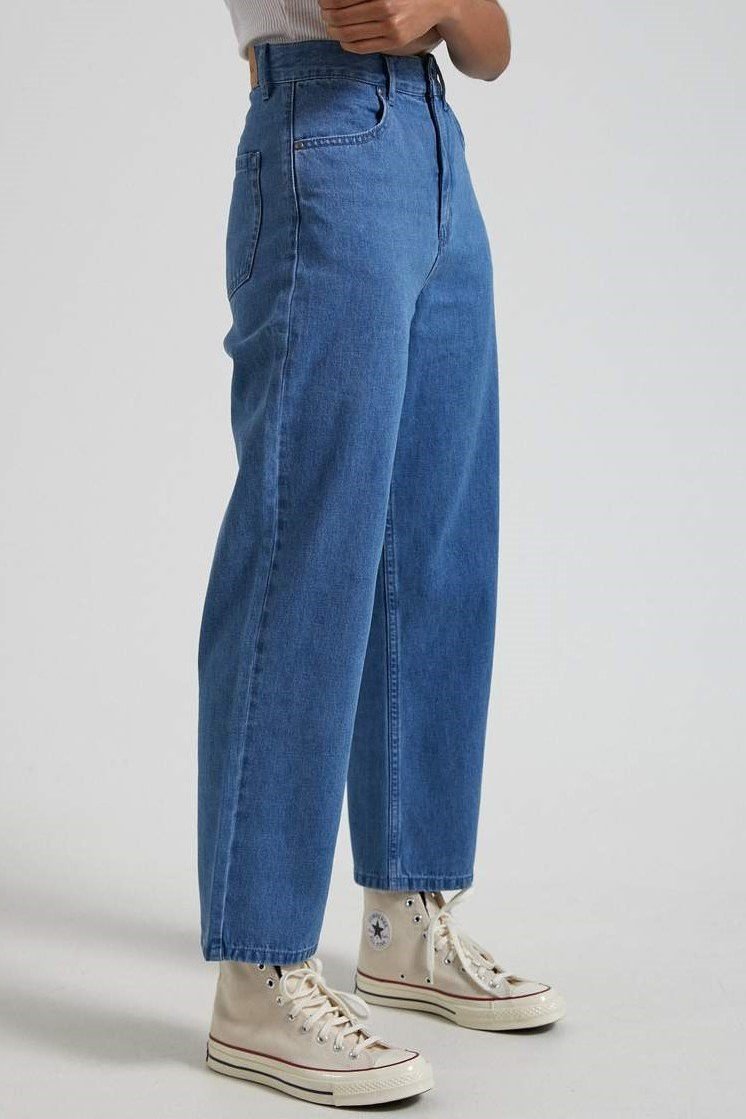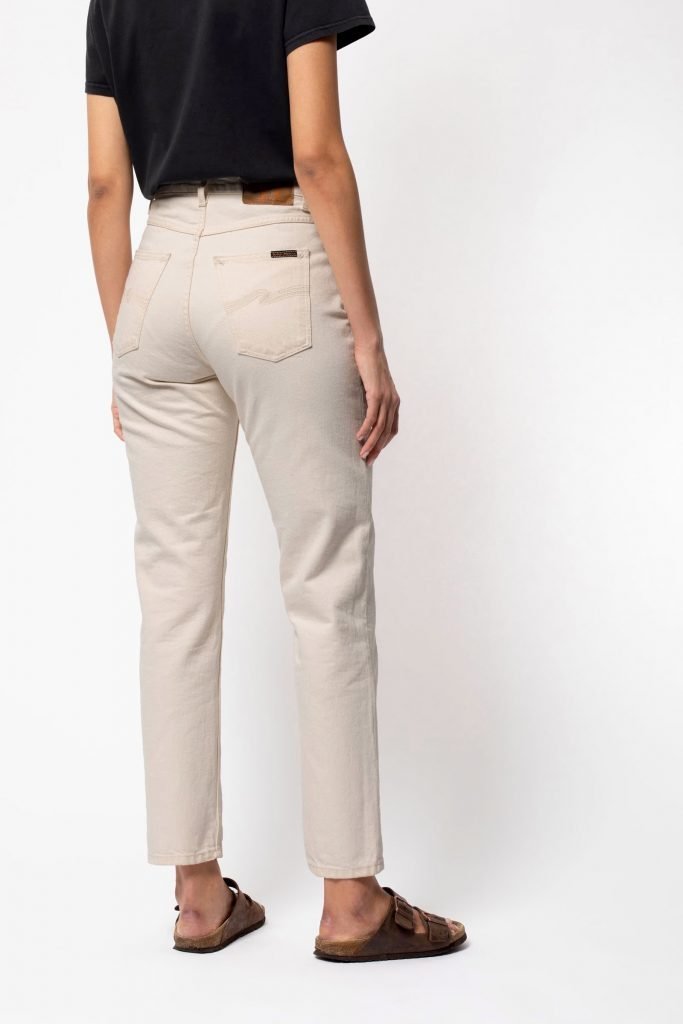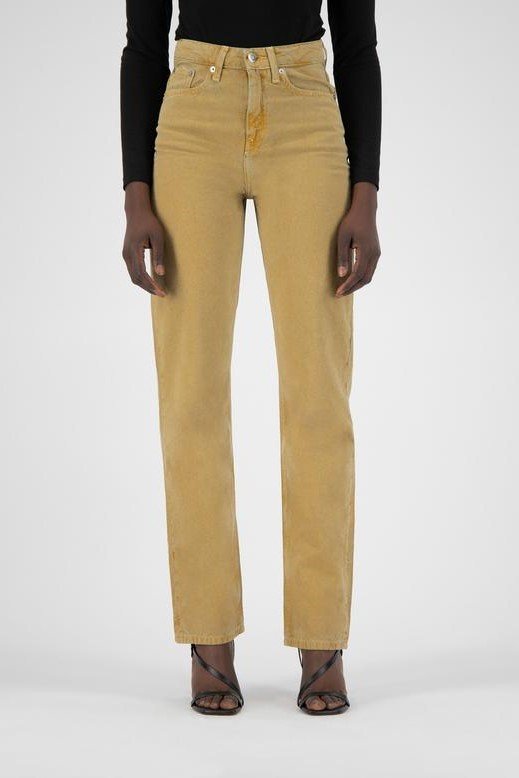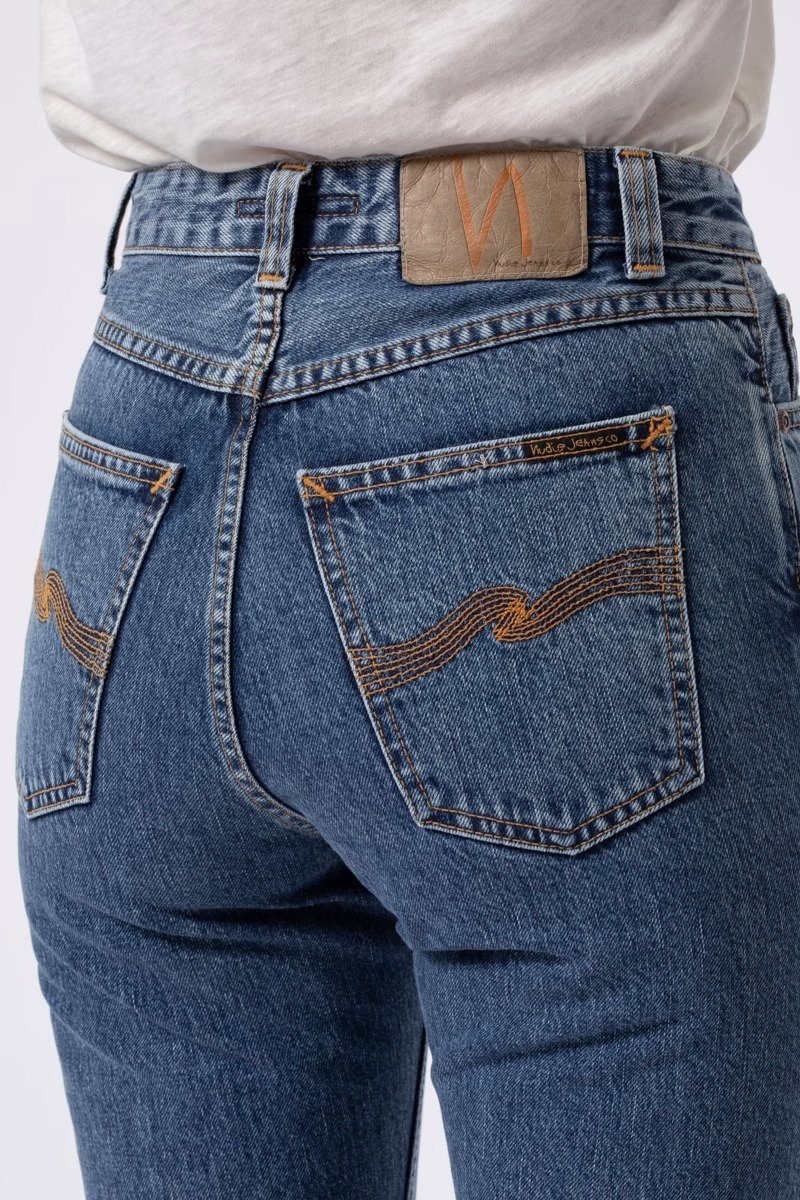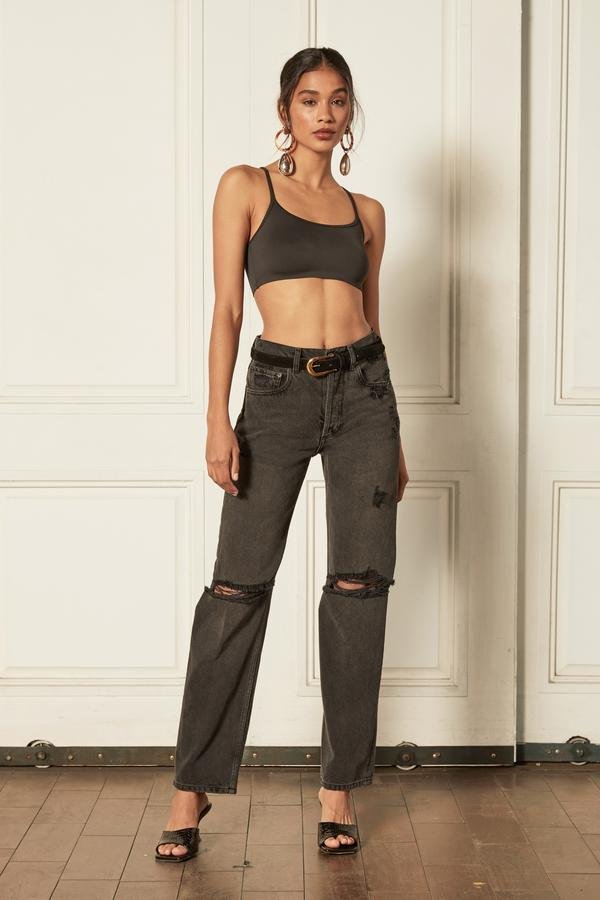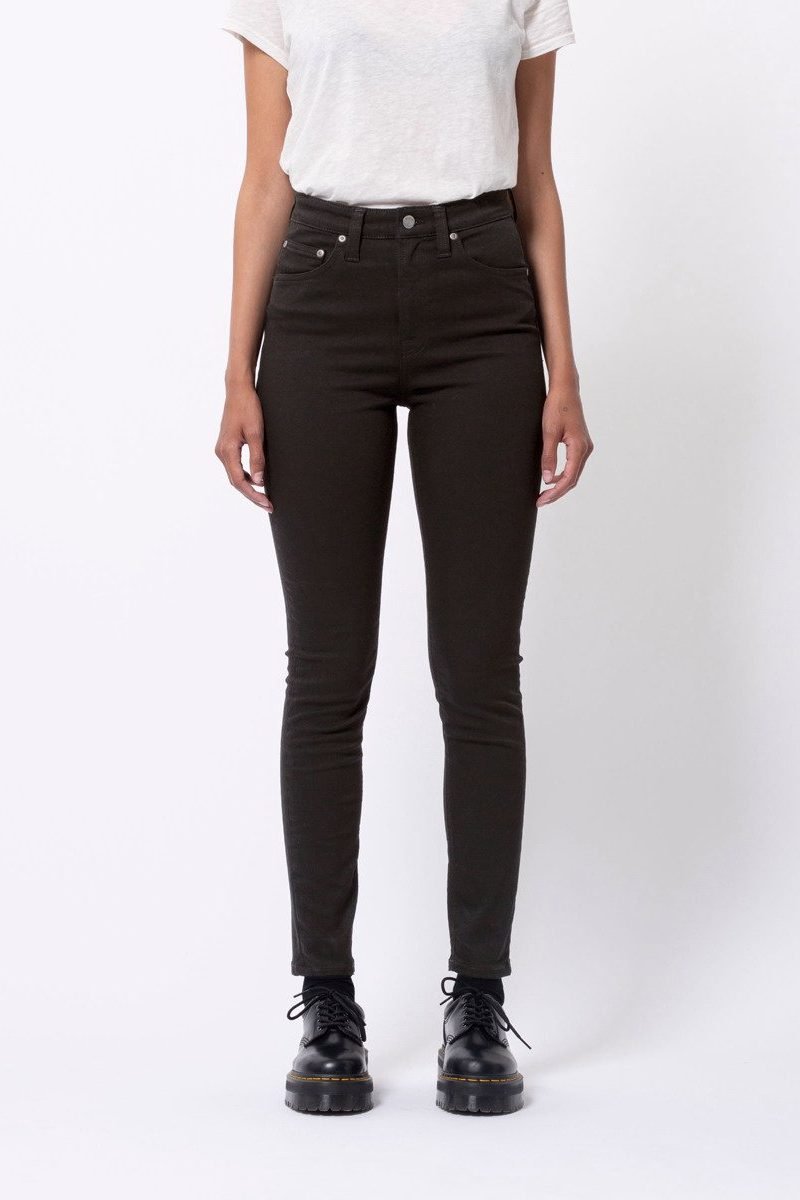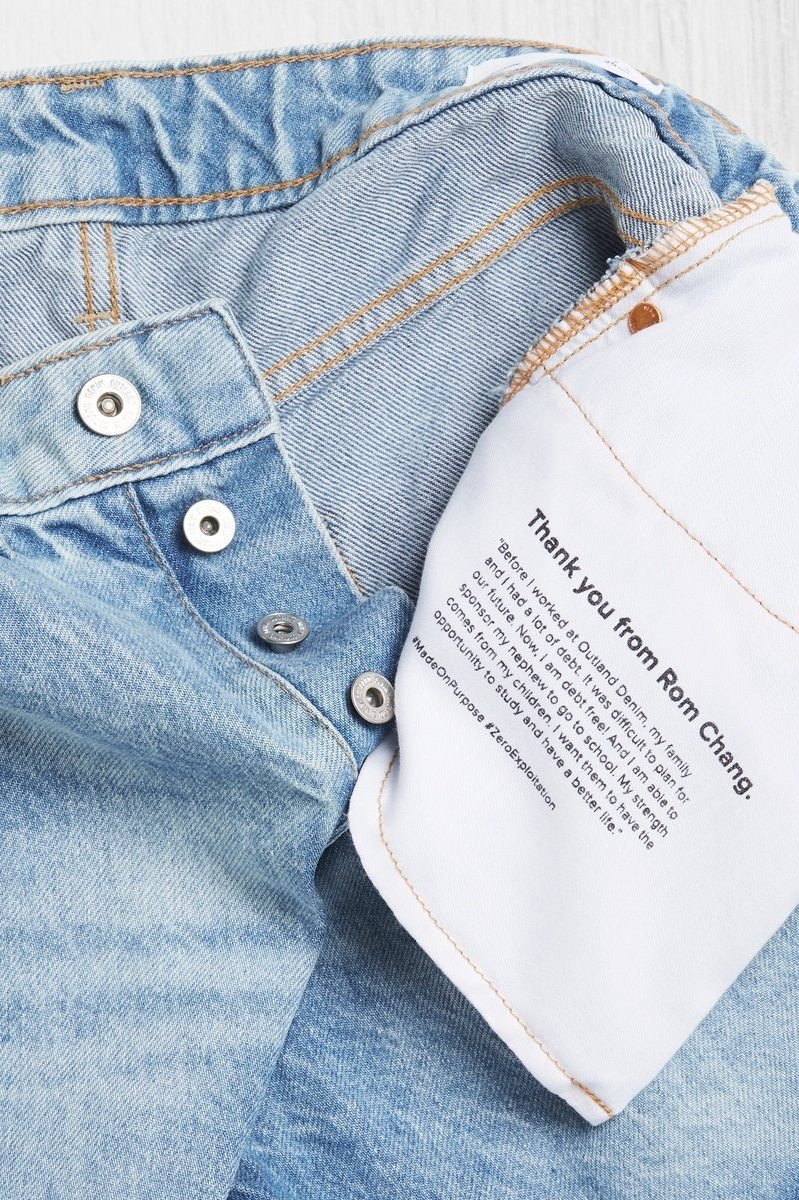SHARE
Have you ever asked yourself how green your blue jeans are?
Something I didn’t know before I got into sustainable fashion and made a habit of reading the tags on my clothes was that denim is made of cotton. And I definitely had no idea about how bad our jeans are for the planet.
On average, producing a pair of jeans requires 7,500 liters of water. Mind = blown.
Probably our good old trusty jeans are the clothes in our wardrobes we wear the most and for the longest time (given that they’re true denim and not some synthetic substitute).
They already have a huge potential to become slow fashion champions as wardrobe staples. So wouldn’t it make sense to produce such long-lasting pieces in the most sustainable way possible?
I want you to know exactly what to look for in your perfect ethical and eco-friendly pair of jeans, but I also want to make it easy for you to find them, so at the end of this post, you can find a list with a few of my favorite susty denim brands.
 PIN ME FOR LATER
PIN ME FOR LATER
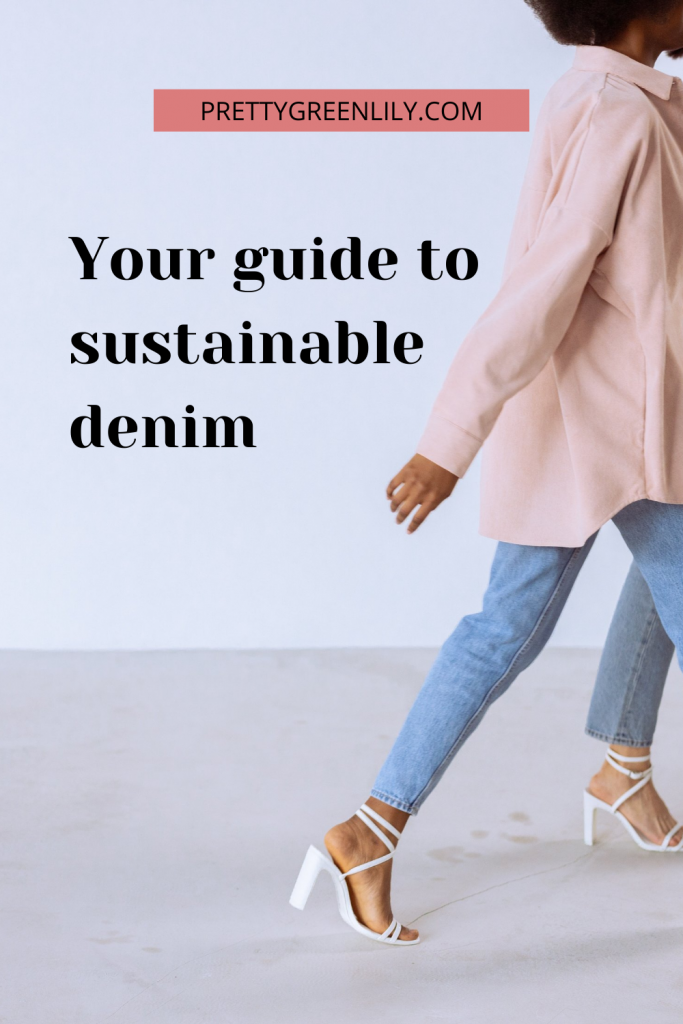
Denim 101
Dungaree, a denim-like fabric, had been used in India for centuries. And the fabric that we know today was first produced in Nîmes, France.
Nîmes > serge de Nîmes (twill from Nimes) > de-Nîmes > denim. After learning this, my life is complete.
Denim arrived in the US in the mid-19th century thanks to a tailor from Nevada, and when his jeans became so popular that he couldn’t keep up with the demand, he sought the help of a dry goods wholesaler, Levi Strauss & Co. Does the name sound familiar?
And for a long time, before it took over the fashion world, denim was used as cheap workwear. Today, millions and millions of jeans are purchased every year (some estimates talk about 1.2 billion pairs).
The first jeans were made of cotton dyed in a specific way (one thread left white, one dyed with indigo) to give them that mottled blue look.
Now, most of our jeans are made of a blend of cotton and some stretchy synthetic fiber (elastane, nylon,…we talked about those, remember?), which makes them comfier, but also often less durable and, of course, less sustainable.
Why conventional denim isn’t sustainable + what to look for instead
1. Cotton
Cotton has a lot of pros: vegan fabric, biodegradable, accessible. But it has a few sucky sides, too.
Cotton is an awfully water-intensive crop. Most of the cotton cultivated in the world for textile use is BP Cotton (genetically modified). We know that GMOs are not always bad, but they’re certainly not great when they’re used as a weapon for financial control.
Read more: How Sustainable Are the Most Used Fabrics and Fibers?
And the problem with BP cotton is that it usually requires very specific pesticides and fertilizers, produced and sold by very specific companies, which puts a huge financial burden on farmers and drains the soil of its nutrients, making the land depend on those substances.
Instead, look for…
Organic, recycled or upcycled cotton are the way to go. There are also new materials being used instead of cotton, like hemp, which requires way less water, or Tencel.
2. Dyes
Our jeans are usually dyed using synthetic indigo, a man-made dye that imitates the bright blue of the indigo plant.
There’s no problem with the natural indigo dye, but the artificial one is made with toxic chemicals, including formaldehyde. After the water used in the dying process is released back into nature, it pollutes streams of water – sometimes with rivers turning indigo blue –, truly messing with the aquatic ecosystem and affecting people who depend on the streams for water, food and sanitation.
Another dye we should be wary about is called azo. It’s banned in the EU because of its carcinogenic potential, as it’s super easy for the human body to absorb it. It’s very commonly used in fast fashion because it’s cheap and it does the job, but it’s absolutely not worth it *thumbs down*.
Also, conventional jean dying requires too much water.
Instead, look for…
Unbleached and undyed fabrics are the greenest and safest option in this sense. But you probably want some color in your wardrobe, so you can look for natural plant dyes (like Nudie Jeans, which uses exclusively natural dyes and water-reducing dyeing techniques) or mineral dyes. A pro tip to make your sustainably dyed jeans last longer is to wash them less, only when it’s really necessary instead of after each wear.
3. Finishings
Those distressed jeans that your dad makes fun of? Have you ever asked yourself how they got those rips?
There are a few techniques, like the use of lasers and stone-washing (literally by putting the jeans in a rotating drum along with pumice).
But the most cost-effective way to make our jeans look all worn out is sandblasting, which is exactly what it sounds like. This is very dangerous for factory workers who are breathing tiny sand particles floating in the air all day long.
Other finishings, like acid washing, are also problematic. Bleach, chlorine and hypocloryde are the chemicals that create this look – that thankfully is staying in the past for now –, and they are highly harmful when they’re released into nature.
Another detail that you want to keep in mind when you’re looking for your next pair of jeans is the leather patch typically sewn on the back. Conventionally, it’s made of leather, so you can look for alternatives like jacron (cellulosic fiber).
Instead, look for…
Laser distressing is probably one of the most eco and ethical options. I suggest you also check out marketplaces where handcrafters may be able to distress jeans safely or even try to DIY distress your own jeans.
4. Fashion waste
Every second, a literal truckload of textile waste is dumped in landfills all over the world.
Millions of jeans are produced every single year, and probably a couple thousand of them are treated as fast fashion, even if they are supposed to be long-lasting and long-loved pieces.
Once we get rid of our jeans, they become part of that massive pile of clothing. And if they were made using synthetic materials or toxic dyes, they’ll be releasing them into the soil and creating microplastics for hundreds and hundreds of years.
Instead, look for…
The best thing you can do is making the jeans you already own last. Buying second hand denim also saves lots of pairs of jeans from landfills (and who doesn’t love a pre-loved original Levi’s 501?). As well, some brands offer take-back programs for when you don’t want your jeans anymore to either find them a new home or reuse the materials and turn them into something new. I have also a soft spot for brands that offer repair services.
You can find high-quality pre-loved denim here:
- Nudie Jean’s re/use program: putting circular fashion to work
- RE/DONE upcycled Levi’s collection: keeping epic Levi’s from going to waste
5. Unethical labor
From the extremely low wages cotton farmers are paid to the risks workers are constantly exposed to in textile factories (dust when sanding jeans, toxic chemicals, unsafe buildings). We have lots of reasons to say the fashion industry isn’t the most ethical one.
Transparency is often a problem, so much so that many big brands don’t even know where their clothes are being produced. This means that they have no control over who makes their jeans or their work conditions.
Read more: What Is Ethical Fashion?
Instead, look for…
Transparency is key. Brands that know everything about their supply lines from beginning to end – and actually do something to make sure they’re clean and fair – are the ones to trust.
 PIN ME FOR LATER
PIN ME FOR LATER
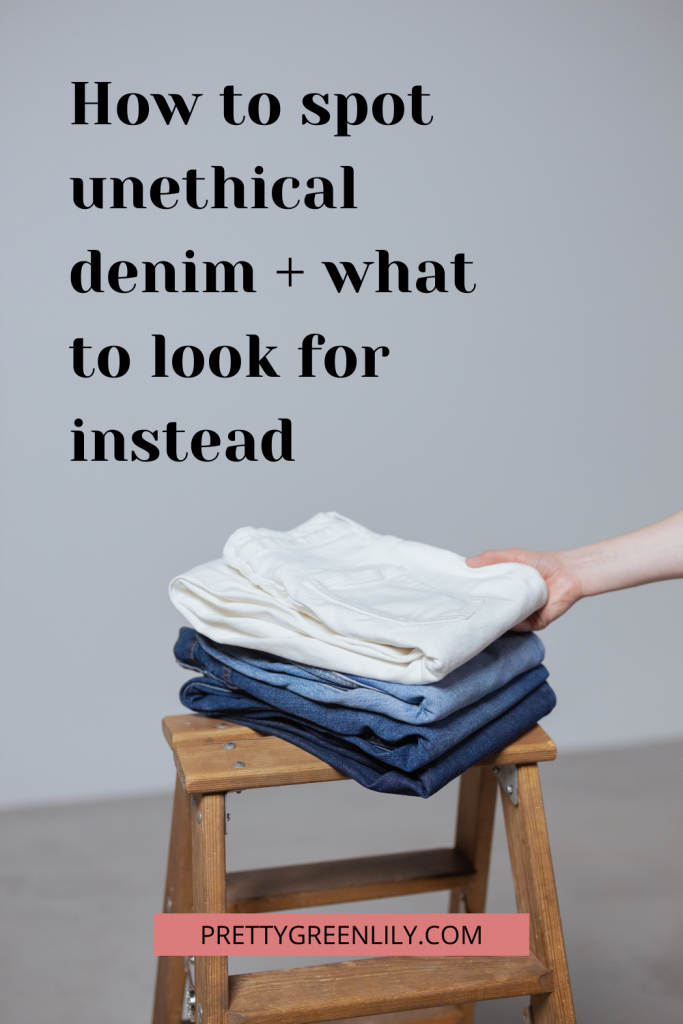
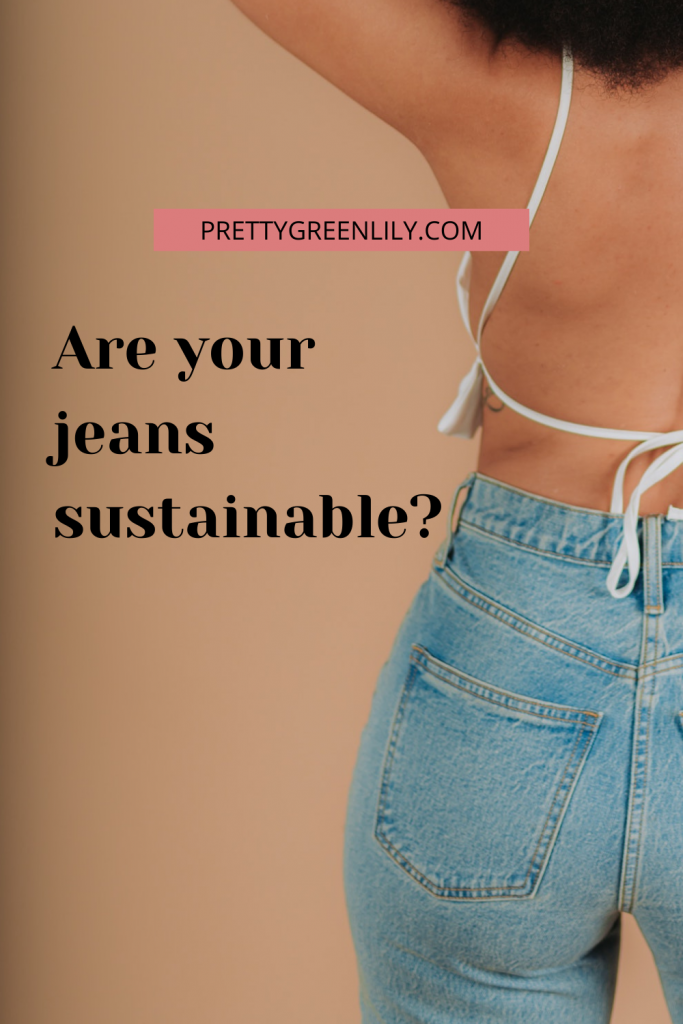
The post Your Guide to Sustainable Jeans + Denim Brands to Keep an Eye On appeared first on Pretty Green Lily.

